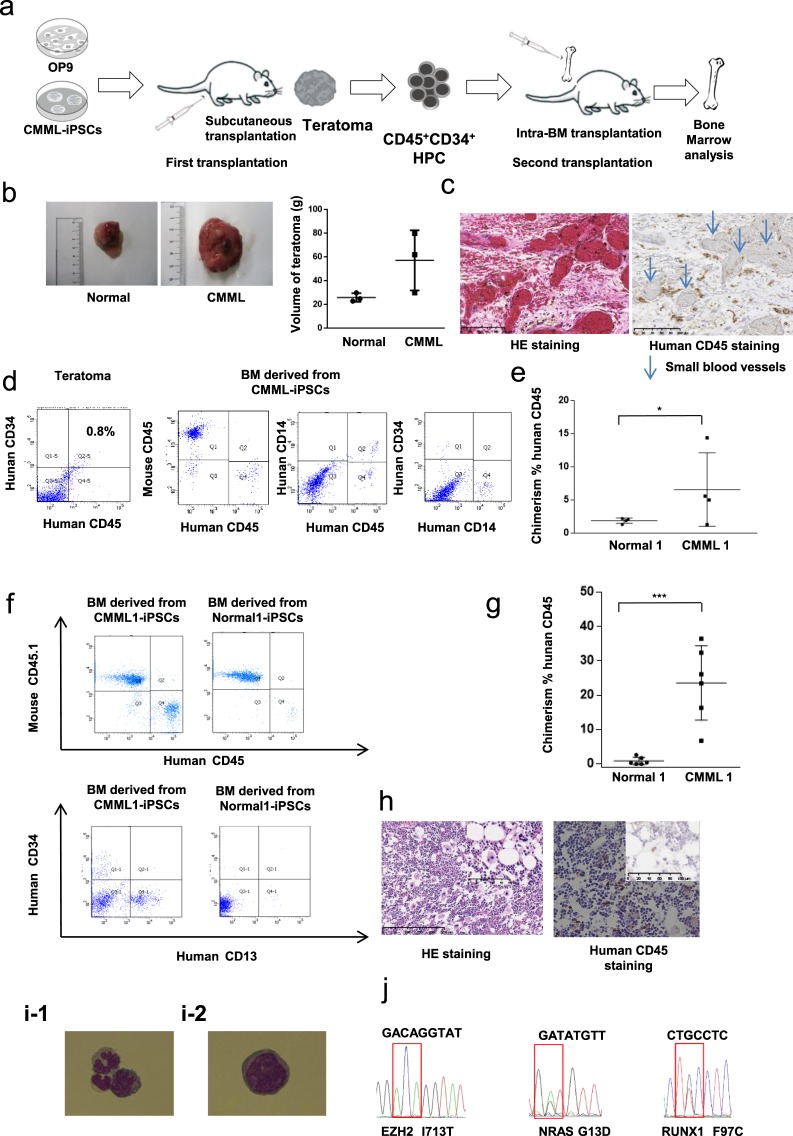Figure 4.
In vivo CMML xenograft model recapitulate its pathogenesis. (a) Experimental scheme for the first transplantation. We co-injected CMML-iPSCs along with OP9 stromal cells into immunodeficient mice using an in vivo system in which human CMML iPSCs develop into HPCs within teratomas. Second transplantation of CMML progenitor cells generated in vivo. (b) CMML iPS-induced teratomas had larger volumes than the induced teratomas from Normal-iPSCs (n = 3, independent experiments, Normal-iPSCs1 from a healthy donor, and CMML-iPSCs 1 from a CMML patient, paired two-sided t-test). (c) Immunostaining of CD45+ blood cells around the small blood vessels generated in the teratoma. (d) CD45+ CD34+ HPCs were isolated from the teratoma. Leakage of the CD45+ CMML cells from the teratoma into the BM was observed. (e) Estimated number of CMML cells in the BM of engrafted mice in which teratomas formed from tCMML iPS cells (n = 4, independent experiments, *p < 0.05, Normal-iPSCs1 from a healthy donor, and CMML-iPSC1 from a CMML patient, paired two-sided t-test). (f) CMML-iPSC-derived blood in vivo reproduced and recapitulated the profiles of CMML surface antigens, CD13+ or CD34+. (g) Flow cytometry revealed human chimerism of CD45+ cells in the BM of the secondarily transplanted NSG mice. Statistical analysis was performed (n = 6, independent experiments, *p < 0.05, Normal-iPSCs1 from a healthy donor, and CMML-iPSCs1 from a CMML patient, paired two-sided t-test). (h) H&E staining and anti-human CD45 immunostaining. (i) Morphological analysis revealed that the sorted CD45+ human cells consisted of monocytes and monoblasts (i-1) and a few blasts (i-2). (j) EZH2, RUNX1, and NRAS mutations identified in the BM of secondarily transplanted NSG mice. Horizontal lines represent the means ± s.d.

